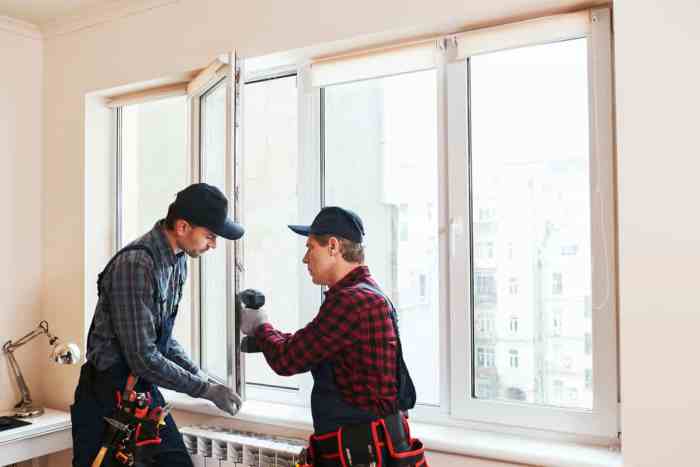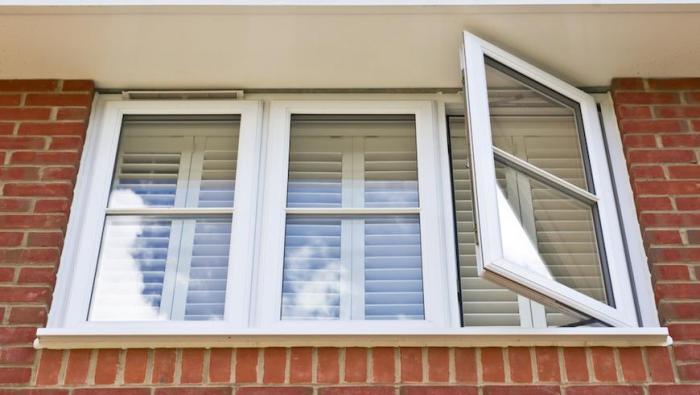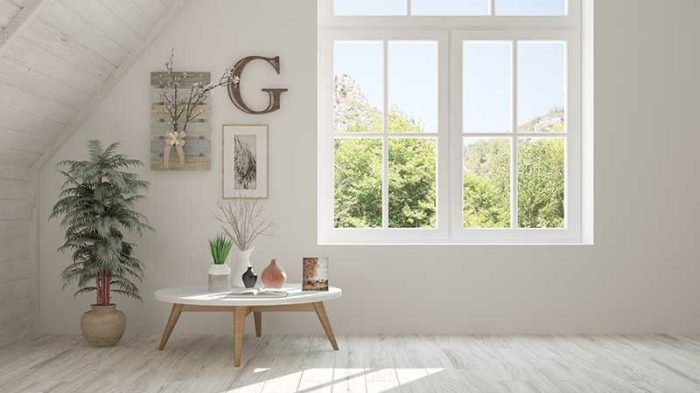Front Door Installation Your Complete Guide
Front door installation is more than just replacing a door; it’s about enhancing your home’s curb appeal, boosting security, and improving energy efficiency. This comprehensive guide explores everything from selecting the perfect door to navigating the installation process, considering cost factors, and ensuring long-term maintenance. We’ll delve into various door types, installation steps, and crucial security and energy-saving considerations to help you make informed decisions for your home.
Choosing the right materials, understanding installation procedures, and considering security features are essential aspects of a successful front door installation. We’ll also cover cost breakdowns, financing options, and how to maintain your new door for years to come.
Front Door Types and Styles
Choosing the right front door is crucial for a home’s curb appeal and overall aesthetic. The selection process involves considering various factors, including material, style, and color. This section explores the diverse options available, outlining the characteristics and benefits of different front door types.
Front Door Materials
Front doors are available in a variety of materials, each with unique properties. Understanding the strengths and weaknesses of these materials is essential for informed decision-making.
- Wood doors offer a classic and timeless appeal. They are often customizable with intricate designs and finishes. However, wood requires regular maintenance, including sealing and painting to prevent rot and decay. Examples include solid wood doors and composite wood doors, which offer a balance between beauty and durability. Solid wood doors can be very expensive, and their maintenance needs can be high.
- Steel doors are known for their durability and security. They resist dents and scratches effectively, making them a good choice for high-traffic areas. Steel doors are generally more affordable than wood and offer better protection against forced entry. However, they may not have the same aesthetic appeal as wood or fiberglass doors. Consider the importance of aesthetics and security in your decision.
- Fiberglass doors offer a compelling blend of beauty and practicality. They are resistant to rot, decay, and insect damage, minimizing the need for maintenance. Fiberglass doors come in a variety of styles and colors, allowing for customization to complement a home’s architectural design. These doors are a popular choice for their longevity and low-maintenance nature. They are usually more affordable than solid wood doors, while maintaining a good balance between style and durability.
Front Door Styles
Front door styles play a significant role in a home’s architectural character. Different styles convey distinct impressions and contribute to the overall aesthetic.
- Traditional styles often feature intricate details, such as raised panels, crown molding, and decorative hardware. These styles are often associated with classic homes and evoke a sense of elegance and permanence. A good example is a classic, paneled front door.
- Contemporary styles are characterized by clean lines, simple designs, and a focus on functionality. These styles are suitable for modern homes and often incorporate glass panels for natural light. Consider a contemporary door with large, unobstructed glass panels for a modern feel.
- French doors, featuring multiple panes of glass, are a popular choice for creating a connection between the interior and exterior spaces. They are often used in homes with patios or gardens. These doors offer stunning views and a sense of openness. A significant drawback is their vulnerability to security breaches compared to solid doors. Consider the security implications and the importance of visual appeal when selecting this style.
Door Material Comparison
A table summarizing the cost, durability, and maintenance requirements of various door materials is provided below.
| Material | Cost | Durability | Maintenance |
|---|---|---|---|
| Wood | High | High (with proper care) | High (requires regular sealing and painting) |
| Steel | Medium | High | Low (requires minimal maintenance) |
| Fiberglass | Medium | High | Low (requires minimal maintenance) |
Popular Front Door Colors and Their Effects
Choosing the right color for your front door can significantly impact a home’s curb appeal. The color you select can affect the overall aesthetic and create a welcoming atmosphere.
- Black doors exude sophistication and elegance, adding a touch of drama to any home. This color is particularly well-suited for contemporary or modern homes. This choice often pairs well with darker exterior elements.
- Gray doors offer a neutral and versatile option, blending seamlessly with various architectural styles. This is an excellent choice for homes that prioritize a clean and minimalist aesthetic. Gray is a popular neutral choice.
- Green doors create a sense of tranquility and nature. They are a good choice for homes that wish to connect with the outdoors. This color is a strong option for homes located in or near nature.
- Red doors are a bold and attention-grabbing choice. They can add vibrancy and a touch of warmth to a home. Red is a strong choice for adding a pop of color to a home.
Installation Process Overview
Installing a front door is a significant undertaking that demands meticulous attention to detail. Proper planning and execution are crucial for a successful installation, ensuring the door functions optimally and enhances the aesthetic appeal of the home. This process encompasses several critical steps, from initial measurements to final adjustments.
A well-executed installation will not only enhance the security and curb appeal of your home but also ensure the door’s longevity and seamless operation for years to come. Careful adherence to the Artikeld steps and considerations will minimize potential complications and ensure a professional outcome.
Pre-Installation Preparations
Thorough pre-installation preparations are essential for a smooth and efficient installation process. Accurate measurements are paramount to ensure the door fits properly within the opening. These measurements must encompass the jambs, frame, and any existing trim. Selecting the appropriate hardware, such as hinges, locks, and handles, is equally important. Careful consideration must be given to the door’s intended use, security needs, and aesthetic preferences.
Measurement Procedures
Accurate measurements are critical for a proper fit. Measure the width and height of the existing door frame opening. Measure the door frame’s thickness, including any trim. Double-check all measurements to avoid costly errors later. Consider adding a small allowance for potential variations in the materials or the measurements of the new door.
Hardware Selection
The choice of hardware significantly impacts the door’s functionality and security. Select hinges that are robust enough to support the door’s weight. Choose locks that align with your security needs. Matching the hardware’s aesthetic to the door’s style enhances the overall appearance.
Installation Steps
The installation process typically follows a structured sequence. First, prepare the door frame by ensuring it is level and plumb. Carefully install the door into the frame, aligning it precisely. Attach the hinges and other hardware, ensuring secure fastening. Adjust the door’s alignment and ensure smooth operation. Install the final trim to complete the installation.
Common Challenges and Solutions
Several challenges can arise during installation. One common issue is inaccurate measurements, which can lead to a poorly fitting door. Using precise measuring tools and double-checking measurements can mitigate this problem. Another potential challenge is improper door alignment, which can result in sticking or binding. Regularly checking and adjusting the door’s alignment throughout the process is essential. Furthermore, improper hardware installation can compromise the door’s security and functionality. Ensure all hardware is correctly installed and tightened to manufacturer’s specifications.
Tools and Materials
| Tool/Material | Description |
|---|---|
| Measuring tape | Essential for accurate measurements. |
| Level | Ensures the door frame is properly aligned. |
| Safety glasses | Protect your eyes from debris. |
| Screwdrivers (various types) | Used for fastening hardware and components. |
| Hinges | Support the door’s weight and facilitate its operation. |
| Locks | Enhance security and provide access control. |
| Door | The primary component of the installation. |
| Door frame | The structural support for the door. |
Door Alignment and Functionality
Proper door alignment is critical for smooth operation and longevity. A misaligned door can lead to sticking, binding, and potential damage to the door or frame. Precise alignment ensures effortless opening and closing, minimizing friction and wear. Regularly checking the door’s alignment throughout the installation process is vital for achieving optimal functionality.
Choosing the Right Front Door
Selecting a new front door is a significant home improvement decision. Careful consideration of various factors, including budget, security, and energy efficiency, is crucial to ensure the chosen door meets both aesthetic and practical needs. This process involves understanding the available security features and energy-efficient materials, and comparing their impact on long-term costs.
Factors to Consider When Selecting a New Front Door
A comprehensive evaluation of factors like budget, security, and energy efficiency is paramount when selecting a new front door. The initial budget will greatly influence the door’s material, features, and overall quality. Security features, such as reinforced frames and robust locking mechanisms, should be carefully assessed to protect the home from potential threats. Energy efficiency, impacting heating and cooling costs, should be factored in by evaluating the door’s insulation properties. Ultimately, the best front door balances these considerations effectively.
Security Features for Front Doors
Security is a primary concern when selecting a front door. Various features enhance security, including reinforced frames, deadbolt locks, and security-rated glass. Reinforced frames are crucial for resisting forced entry, while high-quality deadbolt locks offer a substantial deterrent against intruders. Security-rated glass, often laminated or tempered, is designed to resist breakage and further strengthen the door’s defensive capabilities.
Energy-Efficient Door Materials and Their Impact
Energy-efficient door materials significantly impact heating and cooling costs. Solid wood doors, while aesthetically pleasing, might not offer the same level of insulation as composite or fiberglass doors. Composite doors often combine wood, fiberglass, and other materials to offer good insulation and durability. Fiberglass doors are known for their excellent insulation properties, contributing to lower energy bills. Consider the long-term cost savings when choosing energy-efficient materials.
Comparison of Door Security Ratings
Different doors have varying security ratings, reflecting their resistance to forced entry. The following table illustrates these ratings and associated features.
| Security Rating | Features | Description |
|---|---|---|
| High | Reinforced frame, laminated glass, multiple deadbolts | High-security doors typically include reinforced frames, laminated glass that is difficult to break, and multiple, high-quality deadbolt locks. |
| Medium | Solid core door, reinforced frame, standard deadbolt | Medium-security doors often feature a solid core construction, a reinforced frame, and a standard deadbolt lock. |
| Low | Hollow core door, basic frame, single deadbolt | Low-security doors usually have a hollow core construction, a basic frame, and a single deadbolt lock. |
Importance of Proper Door Sealing for Energy Efficiency, Front Door Installation
Proper door sealing is essential for maintaining energy efficiency. Air leaks around the door frame can significantly reduce insulation and increase energy consumption. Caulk, weatherstripping, and other sealing materials can effectively mitigate these issues, reducing drafts and improving energy retention. The result is a more comfortable and energy-efficient home.
Cost and Budget Considerations
Planning a front door replacement involves more than just aesthetics. Understanding the financial implications is crucial for a successful project. This section details the average cost range, factors influencing pricing, and ways to manage the budget effectively.
Average Cost Ranges for Different Front Door Types
Front door costs vary significantly depending on the material, style, and features. Entry-level doors made of composite or fiberglass, often with standard features, can range from $800 to $2,500 for the door itself. Premium wood doors with elaborate designs and hardware can easily exceed $5,000. Steel doors, often a more affordable option, generally fall between $1,000 and $4,000. Luxury doors with custom designs and specialized glass may cost upwards of $10,000.
Factors Influencing Installation Costs
Several factors contribute to the overall cost of a front door installation. Labor costs, the complexity of the installation, and the need for any structural adjustments all influence the final price. For example, a door requiring extensive framing modifications will likely be more expensive than a straightforward replacement. Similarly, the availability of skilled labor in a particular area can affect the hourly rate charged for installation. The cost of materials, including the door itself, hardware, and any necessary trim or accessories, also plays a key role. Finally, permits and inspections, when required, can add to the overall expenditure.
Components of a Front Door Installation Cost Breakdown
The cost of a front door installation is not just about the door itself. It’s a sum of several components. The price of the door itself, including the material and design, is a significant factor. Installation labor costs are typically a substantial portion, reflecting the time required for removal of the old door, preparation of the frame, and installation of the new door. Additional expenses may include hardware, such as handles, locks, and hinges, as well as any necessary trim work. Permits and inspections, if required by local regulations, will also contribute to the total cost. Finally, unforeseen issues during installation, such as damage to existing framing, might lead to additional expenses.
Ways to Save Money During Installation
Budget-conscious homeowners can implement several strategies to reduce costs. Choosing a less expensive door material, such as fiberglass or composite, can significantly lower the initial investment. Selecting a simpler door style with fewer decorative features can also contribute to savings. Comparing quotes from multiple contractors can help ensure competitive pricing. Additionally, opting for a DIY installation, if comfortable and capable, may reduce labor costs, though professional installation is recommended for structural integrity. Purchasing materials in bulk, when possible, can also lead to savings.
Financing Options for Front Door Replacements
Several financing options can assist homeowners in managing the cost of front door replacements.
| Financing Option | Description |
|---|---|
| Home Equity Loan | A loan secured by the equity in your home. Interest rates can vary, and there are fees associated with processing. |
| Home Improvement Loan | Specifically designed for home improvement projects. These loans may offer lower interest rates compared to other options. |
| Credit Cards | Using a credit card to finance the project may result in higher interest rates and fees. A careful assessment of the interest rate and payment schedule is essential. |
| Personal Loans | Loans from banks or credit unions can be used to cover the costs. These loans often have fixed interest rates and repayment terms. |
| Installment Loans | Loans with set repayment terms typically offer flexible payment schedules. The interest rates are usually comparable to other loans. |
Safety and Security Measures
A robust front door installation goes beyond aesthetics; it significantly impacts the security of your home. Properly implemented security measures deter potential intruders and safeguard your family and belongings. This section delves into crucial aspects of security hardware, installation, and reinforcement.
Security features are paramount in a front door installation. A well-secured entry point significantly reduces the risk of forced entry, minimizing the potential for theft and property damage. This is achieved through careful consideration of door materials, locks, and reinforcement methods.
Types of Locks and Security Ratings
Various lock types offer varying levels of security. Understanding these differences is essential for choosing the right lock for your needs. High-security locks, often with multiple locking mechanisms and reinforced components, provide a stronger barrier against forced entry. Furthermore, the security rating of a lock is often a reflection of its resistance to common attack methods. Different lock types include deadbolt locks, mortise locks, and high-security cylinder locks. Each lock type has its own unique characteristics that contribute to its overall security rating.
Proper Installation Techniques for Security Hardware
The correct installation of security hardware is critical for optimal performance and security. Professionals should handle the installation of locks, deadbolts, and other hardware components. Proper alignment and secure mounting of hardware components are essential to prevent issues like malfunction or easy removal. A poorly installed lock can become a point of vulnerability, negating the intended security benefits. Professional installation ensures the lock functions as designed, with no gaps or weaknesses in the installation process. Furthermore, the installation should adhere to manufacturer’s recommendations for proper spacing, mounting depth, and other crucial details.
Door Reinforcement Methods for Enhanced Security
Reinforcing the door itself enhances its overall security. Reinforced door frames can significantly improve the structural integrity of the door assembly. Reinforcement methods like additional metal plates or reinforced door jambs are effective in preventing forced entry. These methods provide additional strength, making the door more resistant to forceful entry attempts. Examples of reinforcement methods include installing reinforced door jambs, adding steel plates to the door itself, or installing security-grade door reinforcement hardware.
Importance of Proper Door Jamb and Frame Installation
The door jamb and frame are foundational elements in a secure door installation. The quality of the jamb and frame installation directly impacts the door’s structural integrity and its resistance to forced entry. Properly installed jambs and frames provide a stable and secure mounting for the door, preventing warping or shifting. If the door jamb and frame are not installed correctly, the door can become a weak point in the home’s security. Additionally, a sturdy frame supports the door, making it more resistant to forced entry. Professionals ensure the jambs and frame are aligned correctly and securely attached to the structure. Using proper fastening techniques, such as reinforced screws and anchors, is crucial for structural integrity.
Maintenance and Repairs
Proper maintenance and timely repairs are crucial for extending the lifespan and ensuring the security of your front door. Neglecting these aspects can lead to costly replacements down the line and compromised safety. A well-maintained front door not only enhances the curb appeal of your home but also safeguards it from potential damage and intrusion.
Maintaining Longevity
Regular upkeep plays a vital role in preserving the condition of your front door. This involves a range of practices, from simple cleaning to more involved inspections. Consistent care helps prevent premature wear and tear, ensuring your door remains attractive and functional for years to come.
- Cleaning: Regular cleaning with mild soap and water, followed by a thorough drying, is essential. This prevents the buildup of dirt, grime, and mildew, which can degrade the door’s finish and material. Avoid harsh chemicals, which can damage the door’s surface.
- Sealant Inspection and Repair: Inspect weatherstripping and sealant regularly for any signs of damage or deterioration. Replacing worn or damaged seals helps maintain the door’s insulation and prevents drafts and water damage. This is particularly important in climates with extreme temperatures.
- Lubrication: Regular lubrication of hinges and moving parts with a suitable lubricant ensures smooth operation and prolongs the lifespan of these components. This is especially important for preventing squeaking and stiff operation.
- Door Frame Inspection: Periodically check the door frame for any signs of damage, such as cracks, warping, or rot. Addressing these issues promptly prevents further damage and maintains the structural integrity of the door assembly.
Common Front Door Repairs
Addressing issues promptly is key to preventing more extensive and costly repairs. This includes fixing minor problems before they escalate into major concerns. Here are some common repairs:
- Damaged Door Frame: If cracks or damage are detected in the door frame, the solution involves careful repair or replacement. Using appropriate materials and techniques will restore the structural integrity of the frame.
- Lock Replacement: A malfunctioning lock can pose a significant security risk. Replacing the lock with a modern, high-security model ensures the safety of your home. Consult with a locksmith or a qualified professional for this task.
- Weatherstripping Replacement: Replacing worn-out weatherstripping or sealing the gaps around the door frame can significantly improve the door’s energy efficiency and prevent drafts. This is often a cost-effective solution for improving insulation and preventing energy loss.
Importance of Regular Inspections
Regular inspections allow for the early detection of potential problems. This proactive approach helps prevent minor issues from escalating into more significant and costly repairs. Prompt action is key to maintaining the door’s functionality and aesthetics.
- Visual Inspection: Regularly inspect the door for any signs of damage, such as dents, scratches, or warping. Also check for signs of water damage around the frame.
- Functional Testing: Ensure the door opens and closes smoothly, with no sticking or unusual noises. Check all the hardware, including the lock, hinges, and handles.
- Seal Inspection: Inspect weatherstripping and sealant for any damage or deterioration. Check for gaps or areas where air or water might be entering the door frame.
Common Problems and Solutions
The following table lists Artikels common front door problems and their corresponding solutions:
| Problem | Solution |
|---|---|
| Cracked or damaged door frame | Repair or replace the frame with appropriate materials. |
| Squeaking hinges | Lubricate the hinges with a suitable lubricant. |
| Malfunctioning lock | Replace the lock with a high-security model. |
| Damaged weatherstripping | Replace the weatherstripping. |
Emergency Repairs in Inclement Weather
Addressing issues during inclement weather is critical. This involves taking swift action to prevent further damage. In such situations, prioritization is crucial for ensuring safety and security.
- Water Damage: If water is entering the door frame, use towels or other materials to absorb the water and prevent further damage. Contact a professional to address the issue.
- Structural Damage: If the door frame or door is structurally compromised due to weather, contact a professional for immediate repairs. Prioritize safety and secure the area.
- Blocked Doorway: If a doorway is blocked by debris or other obstructions, clear the area and ensure free access. Contact a professional for more extensive repairs.
Environmental Impact and Sustainability: Front Door Installation

Source: do-daddy.com
Choosing a front door involves more than aesthetics; its environmental footprint matters. Considering the lifecycle of the material, from extraction to disposal, significantly impacts the overall sustainability of your home. This section delves into the environmental impact of various door materials, exploring sustainable alternatives, and highlighting the energy efficiency of different options.
Sustainable construction practices are becoming increasingly crucial. Front doors, often overlooked in this context, can contribute substantially to a home’s environmental profile. Understanding the ecological footprint of different materials and opting for eco-friendly choices are vital steps in responsible homeownership.
Impact of Different Door Materials
Various materials have varying environmental impacts throughout their life cycle. Wood, for example, can be sourced sustainably from responsibly managed forests, while others might have more significant impacts on the environment. The manufacturing processes and transportation of materials also contribute to their overall footprint. Understanding these factors allows for informed choices aligned with environmental goals.
Sustainable and Eco-Friendly Door Materials
Several materials offer environmentally friendly options. Recycled or reclaimed wood, sourced from existing structures, significantly reduces the demand for new resources. Composite doors, made from recycled content and often using low-VOC paints, represent a modern alternative. Metal doors, especially those using recycled steel, can be sustainable choices. Consideration of these materials helps minimize the environmental burden associated with traditional materials.
Energy Efficiency and Environmental Impact
Energy efficiency is intrinsically linked to environmental impact. A well-insulated door minimizes energy loss, reducing the need for heating and cooling, thereby lowering carbon emissions. Doors with high thermal performance, such as those with multiple layers of insulation or advanced glazing, reduce the energy required to maintain indoor temperatures. This translates into a smaller environmental footprint for the home.
Recycled and Reclaimed Materials
Using recycled or reclaimed materials in front door installations is a crucial step towards sustainability. Reclaimed wood, for example, reduces the need for logging new trees and often incorporates salvaged wood from existing structures. This process not only conserves resources but also reduces the overall carbon footprint. This also extends to metal components, such as recycled steel or aluminum, further minimizing environmental impact.
Carbon Footprint Comparison
The following table provides a simplified comparison of the carbon footprint of various front door materials. It’s crucial to note that specific values depend on many factors, including sourcing, manufacturing processes, and transportation distances.
| Material | Carbon Footprint (Estimated, range may vary significantly) | Explanation |
|---|---|---|
| Reclaimed Wood | Low | Reduces demand for new lumber, often sourced from existing structures. |
| Recycled Composite | Medium | Made from recycled materials, with potentially lower emissions during manufacturing. |
| Solid Wood (Sustainable Sourcing) | Medium | From responsibly managed forests, with a lower impact than non-sustainable sources. |
| Steel | Medium-High | Production of steel can have a significant carbon footprint, but recycled steel can lessen this. |
| Aluminum | High | Aluminum production requires significant energy, although recycling can reduce the impact. |
Conclusion
In conclusion, a well-planned front door installation can significantly impact your home’s value, safety, and energy efficiency. By carefully considering door types, installation procedures, security features, and cost factors, you can achieve a stylish, secure, and energy-efficient entryway. Remember to prioritize your needs and budget while exploring the various options available to you. Proper maintenance and regular inspections will ensure your investment lasts for years to come.





